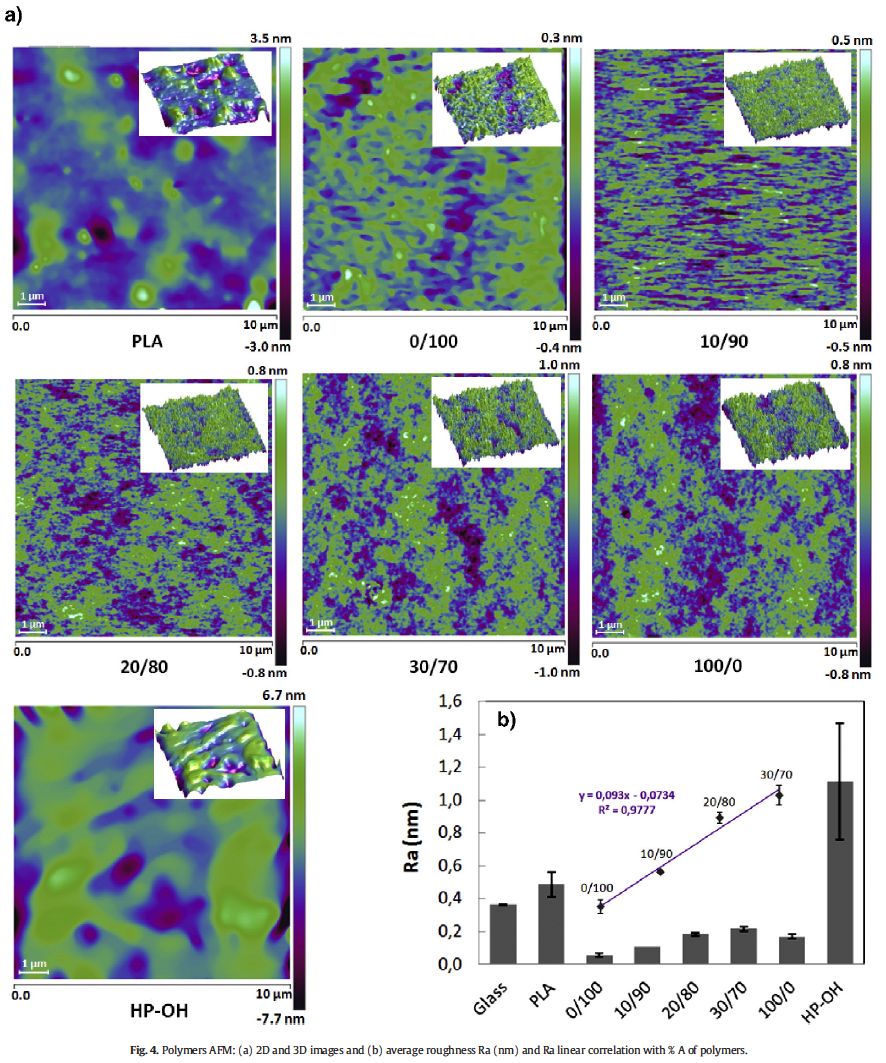Effect of chemical heterogeneity of biodegradable polymers on surface energy: A static contact angle analysis of polyester model films
Belibel R, Avramoglou T, Garcia A, Barbaud C, Moras L
2015 • Mater. Sci. Eng C • [pdf]

Biodegradable and bioassimilable poly((R,S)-3,3 dimethylmalic acid) (PDMMLA) derivatives were synthesized and characterized in order to develop a new coating for coronary endoprosthesis enabling the reduction of restenosis. The PDMMLA was chemically modified to form different custom groups in its side chain. Three side groups were chosen: the hexyl group for its hydrophobic nature, the carboxylic acid and alcohol groups for their acid and neutral hydrophilic character, respectively. The sessile drop methodwas applied to characterize thewettability of biodegradable polymer film coatings. Surface energy and components were calculated. The van Oss approach helped reach not only the dispersive and polar acid–base components of surface energy but also acid and basic components. Surface topography was quantified by atomic force microscopy (AFM) and subnanometer average values of roughness (Ra) were obtained for all the analyzed surfaces. Thus, roughness was considered to have a negligible effect on wettability measurements. In contrast, heterogeneous surfaces had to be corrected by the Cassie–Baxter equation for copolymers (10/90, 20/80 and 30/70). The impact of this correction was quantified for all the wettability parameters. Very high relative corrections (%) were found, reaching 100% for energies and 30% for contact angles.

